ActionLine Special: Q&A with State Superintendent Mohammed Choudhury


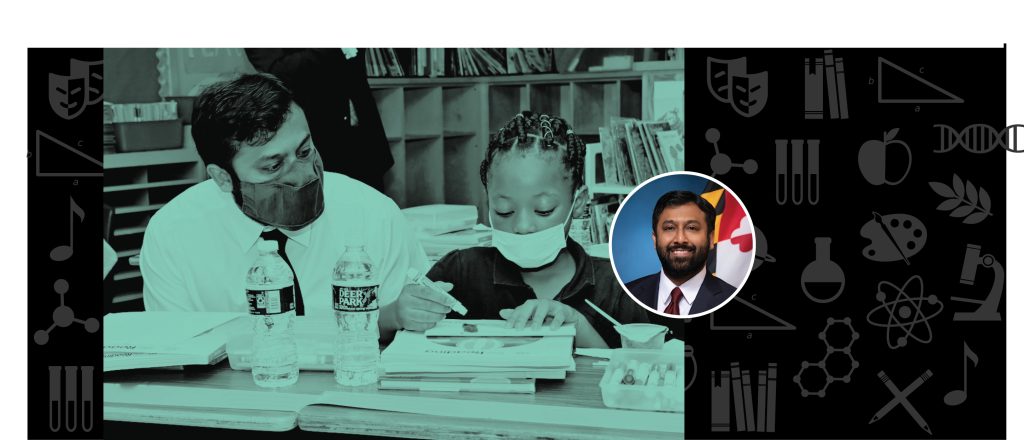
Meet new Maryland State Superintendent of Schools Mohammed Choudhury in this special ActionLine interview. Choudhury comes to MSDE from Texas where he was Associate Superintendent and Chief Strategy, Talent, and Innovation Officer in San Antonio and Chief and Director of Transformation and Innovation in Dallas. Grab a cup of coffee and meet this Maryland newcomer who shares his plan for Blueprint implementation and more.

Now that you’ve been in Maryland for a few months, are you putting Old Bay on all of your food or just most of your food?Ha! Not quite, but I do like to put hot sauce in almost everything and I drive my wife crazy by collecting sauces. I know that Maryland is known as America in Miniature, and I am excited to live out that experience. To date, I have had the opportunity to eat several crab cakes and iterations of Smith Island cakes across Maryland, and I am still forming an opinion on which is considered the best.
What has stood out to you so far as the unique challenges and opportunities that our students face in Maryland?
This is a transformational time for Maryland education—that presents both challenges and opportunities. Maryland has had a reputation of providing a high-quality education for students, but gaps have always existed and have only gotten wider for far too many students, both in opportunities and outcomes, so there is a lot of work to be done.
Our mission to realize a bright future for every student requires us to be bold, with urgency, as educators. Unacceptable learning gaps for socioeconomically disadvantaged students, Black and Brown students, English language learners, and students with disabilities persist in one of the most affluent states in our country.
MSDE must be focused on delivering the needed resources and professional development, and delivering them well, to support school systems in narrowing and closing opportunity and achievement gaps—this is the most significant challenge and opportunity in education and I will be relentlessly focused on it each and every day.
We need to seize this moment to ensure that every Maryland student has access to excellent and equitable educational opportunities to realize their full potential. Talent is equally distributed, but opportunity is not. We should not accept a return to normal, because normal was not good enough, especially for those who have been historically underserved.
Implementing the Blueprint for Maryland’s Future with fidelity is a top concern for educators, parents, and policymakers. What do you foresee as the key steps in doing so successfully?
A once-in-a-generation opportunity, the Blueprint provides the policy roadmap to realize lasting improvements in our education system—in other words, it has set up the conditions to put the resources (and funding) where our mouth is.
To effectively implement these historic resources, it will require us operationalizing best-in-class practices that we know that work at scale along with bold, new strategies and innovations in implementation with the full participation of all stakeholders.
We cannot squander this opportunity to get it right. Rich, meaningful engagement with all our stakeholders will be key. MSDE is starting our strategic planning process, and I want to have hundreds of outreach events with thousands of stakeholder touchpoints leading up to the launch of a strategic plan that will anchor the Blueprint.
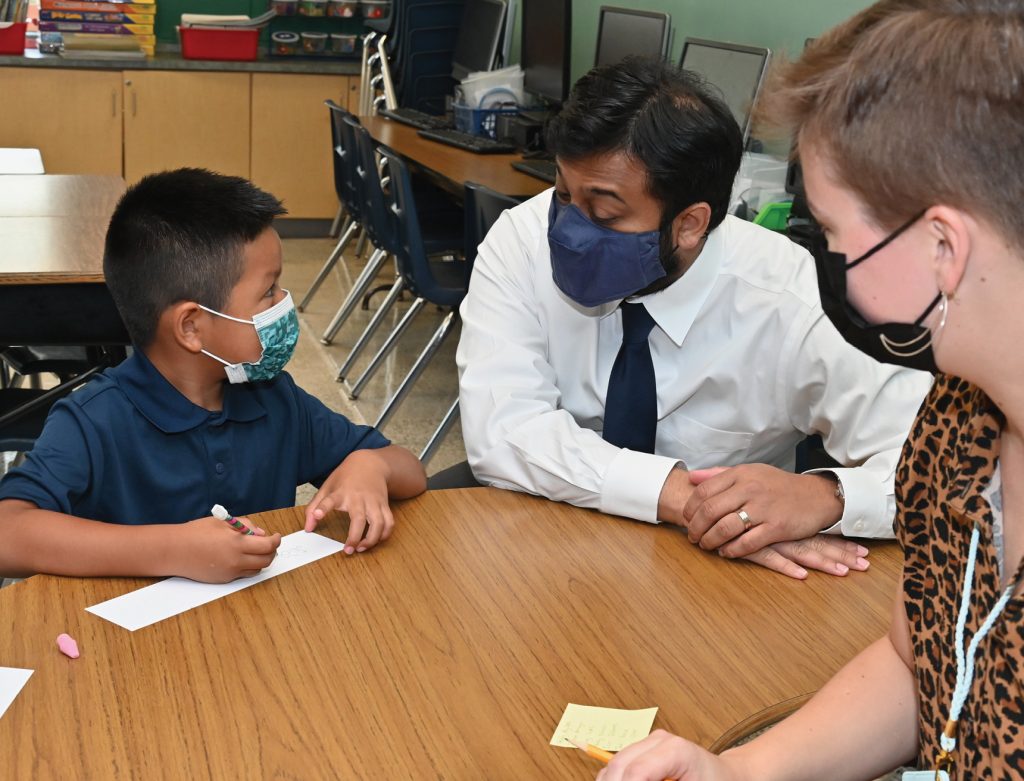
I am beginning to shadow students and superintendents throughout the state—I recently visited Western Maryland and Southern Maryland counties. It’s important that we fully understand the regional diversity and needs across the state. Differentiated implementation supports will matter immensely.
Along with authentic engagement, MSDE will also unapologetically lead with research- and data-driven practices front and center in steering the course for high-quality implementation. It is often said that the best laid policy goals go to die in implementation. We cannot let this happen; we need to be open to intervening and course correcting as soon as we see ineffective practices taking shape. We must be held accountable for results. MSDE and our school systems must be willing to do the hard work needed, and do it well, to ensure that we get it right for Maryland’s children.

Beyond the Blueprint, what policies and programs do you want to initiate and lead on as superintendent?
We are beginning our planning process to develop a multi-year strategic plan that will anchor the Blueprint for Maryland’s Future. The strategic plan will revamp our vision and mission, and define our core priorities and objectives delivered through impactful strategies and initiatives. Engagement, collaboration, accountability, and innovation are values that will steer our journey ahead and drive results.
I am currently in the middle of reimagining MSDE as an organization. While I am grateful for inheriting a committed staff and some amazing work that is already underway, there is more work to be done to ensure the right people are in the right positions and best practices are driving our day-to-day work—so I am focused on that. I have created some new divisions including an Office of Strategic Planning and Continuous Improvement to focus on Blueprint implementation, expanding our Office of Communications to include a community engagement subdivision, and restructuring our core operational divisions and services to be more effective and responsive to internal and external stakeholders.
There are certain policies that I am particularly passionate about—one is to better define and respond to the level of poverty and segregation experienced by our students. To deliver resources and best practices where they are most critically needed, we are looking at developing and implementing a more nuanced approach towards assessing and responding to poverty—what I often like to describe as taking a block-by-block approach. I am currently also personally chairing the Blueprint’s English Language Learners Workgroup, which will involve the development of a policy roadmap for the state and a playbook for school systems to implement strategies that accelerate learning for our growing population of English language learners. Research shows that we should embrace dual language learning for our young learners, and that is the direction that I would like to see us move into fully across the state.
Additionally, I believe that the Blueprint has room for refinement, and we should not hesitate to make the necessary changes to ensure that our policy conditions can be the best they can be in the years ahead. For example, I believe we need to strengthen our policies and practices for ensuring high-quality reading instruction across the state (this is currently not happening at scale) and the way we go about recruiting and retaining accomplished educators at low-performing and high poverty schools. The latter is a matter that is very personal to me—as a former student, teacher, and district leader who attended, taught, and worked at highly segregated, 90% plus Title I schools and districts throughout my entire life, this is an area I will have a major focus on.
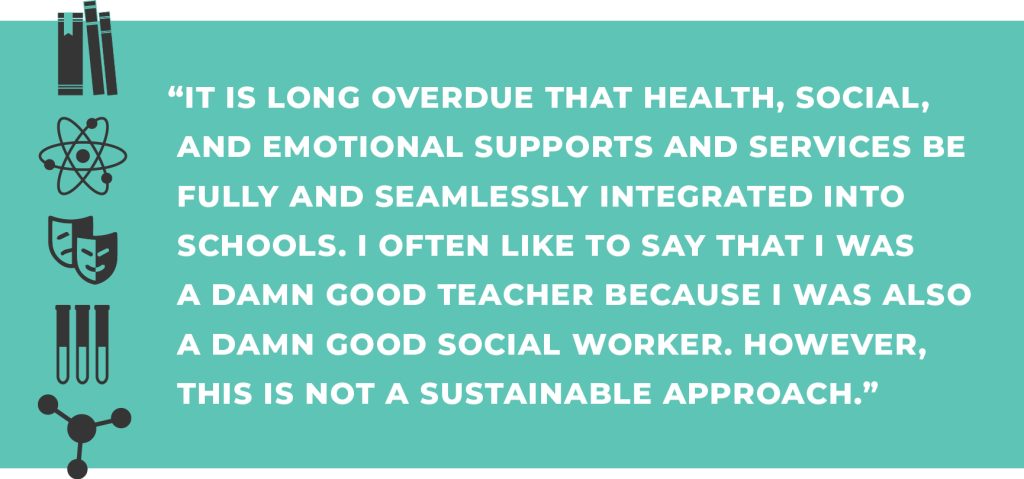
A lot of attention is often given to the teaching profession, but there are other professions in our schools that are part of the purview of the State Department of Education. What are your priorities and opportunities for education support professionals to grow and lead their professions?
Schools, and more importantly, student success is dependent on an ecosystem of support that also includes our social workers, speech pathologists, counselors, bilingual support staff, food service workers, bus drivers, and custodial staff—to name just a few. The pandemic has especially revealed that these critical roles will also require smart investments and sustainable strategies over the coming years such as “grow your own” and career ladder initiatives to recruit and retain talent to serve our school communities. Positive school cultures thrive when support staff are included. I am still in the early stages of assessing existing statewide policies and practices that either support or impede upon ensuring the success of our support staff.
Educators are seeing increasing social and emotional needs from students and families, which impact the readiness of students to engage in learning. What are your ideas for how we can find the time to address the trauma needs of students and recruit and retain more mental health professionals to our schools?
It is long overdue that health, social, and emotional supports and services be fully and seamlessly integrated into schools. I often like to say that I was a damn good teacher because I was also a damn good social worker. However, this is not a sustainable approach.
Even before the pandemic, teachers invested a tremendous amount of time and energy acting as social workers in addition to their instructional responsibilities. We need to support school systems and their counties and city governments in integrating the necessary support and wraparound services as part of the day-to-day student and family experiences in schools, so that teachers can focus on their primary responsibility of teaching and learning.
Expanding and implementing the community school model across our state will be an essential component towards fully integrating wraparound services into our school communities to ensure students have their basic needs met. MSDE cannot stand on the sidelines and must directly partner with stakeholders to ensure highly effective implementation of the community school model.
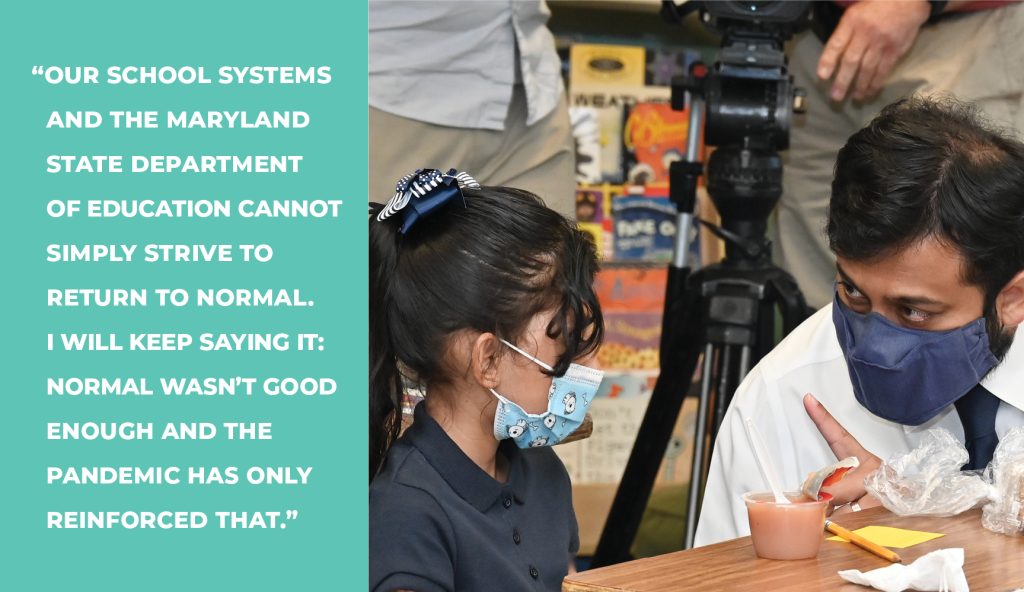
Decades of research has made it abundantly clear: the adult in front of our students each and every day is the most important school-based factor driving student achievement and a student’s socioeconomic status is the most important out-of-school force shaping long-term educational outcomes. We need to do both well at the same time. That is, implement effective instructional initiatives that improve educator practices alongside ensuring that health, social, and emotional supports are embedded into schools to realize student success at scale.

Maryland has traditionally tried to find a balance between ensuring equity and quality implementation of programs with local control and input. How do you think we should best navigate this balance, especially in light of challenging conversations around Blueprint implementation and curriculum decisions?
I am committed to shadowing students and engaging with local stakeholders throughout our state regularly. It is important that we fully understand the regional needs across the state. For example, I recently experienced first-hand some of the transportation and broadband challenges in communities across Western Maryland.
While it is crucial that MSDE differentiates Blueprint implementation supports across our counties and Baltimore City, the department must also work to ensure that there are no regional mysteries on matters such as what educational equity looks like in action; how to teach reading effectively at scale; defining learning environments in which English language learners thrive; effective strategies to transform low-performing schools; the strategies needed to disrupt the disproportionate damage caused by mislabeling Black boys as emotionally and cognitively challenged in special education; the importance
of ensuring high-quality, job-embedded collaborative planning time and professional development for our teachers; the adequate resources necessary for students living in concentrated poverty and segregated communities to achieve at high levels; and in many other key areas crucial to getting Blueprint implementation right.
What have been your biggest lessons learned from the pandemic?
We witnessed an unwavering resilience of students, parents and guardians, teachers and support staff, school leaders, and communities. Through the pandemic, schools have remained in operation as sites for mental health services, COVID-19 testing, meal distribution, and vaccines. Without question, we saw the dedication and innovation of our educators as we pivoted to virtual and hybrid learning and pursued the return to full-time, in-person learning. We have learned that by harnessing adaptive policymaking that we can continue to serve our students academically, socially, and emotionally under the most challenging of circumstances.
Now more than ever, we understand the importance of ensuring wraparound services as an essential component of our education system. We know that we must ensure that all students have access to a computer that is connected to high-speed, reliable broadband as a key fundamental condition towards delivering upon the promise of public education. We know that virtual learning can work well for a subset of students and cultivate innovations in family engagement that should continue beyond the pandemic.
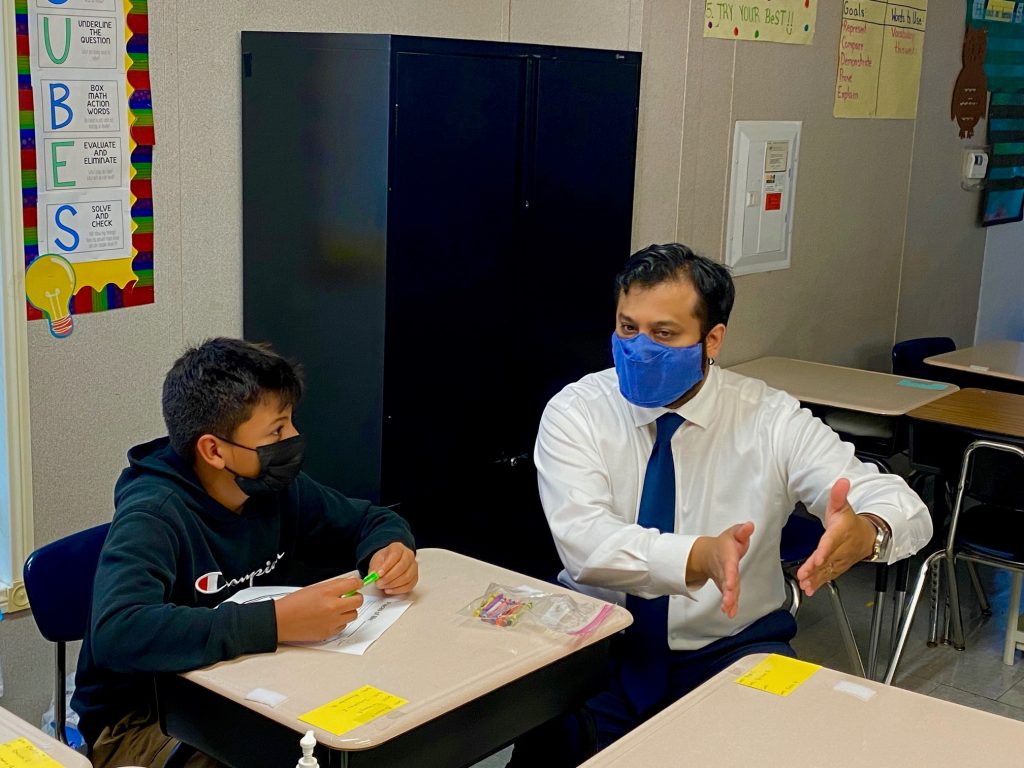
However, we also know that the pandemic only exacerbated the inequities in our education system that were already present. We know that at scale, remote learning simply did not work for most of our students and resulted in decreased engagement and profound levels of learning loss. Emerging qualitative and quantitative assessment data from around the country has showed an alarming trend: where steady improvements had been made over the past few years, the pandemic wiped out those gains and then some. The impact of remote learning has disproportionately and adversely affected our Black and Brown communities and socioeconomically disadvantaged students. We also know that the pandemic has disrupted enrollment trends across our school systems and forced a reassessment of staffing structures, working conditions, and needs that will have long-term implications for talent retention and recruitment.
Our school systems and the Maryland State Department of Education cannot simply strive to return to normal. I will keep saying it: normal wasn’t good enough and the pandemic has only reinforced that. It’s going to take bold, evidence-based recovery and acceleration efforts and deep levels of engagement to effectively implement the Blueprint for Maryland’s Future to realize and sustain excellent educational outcomes for all students.

